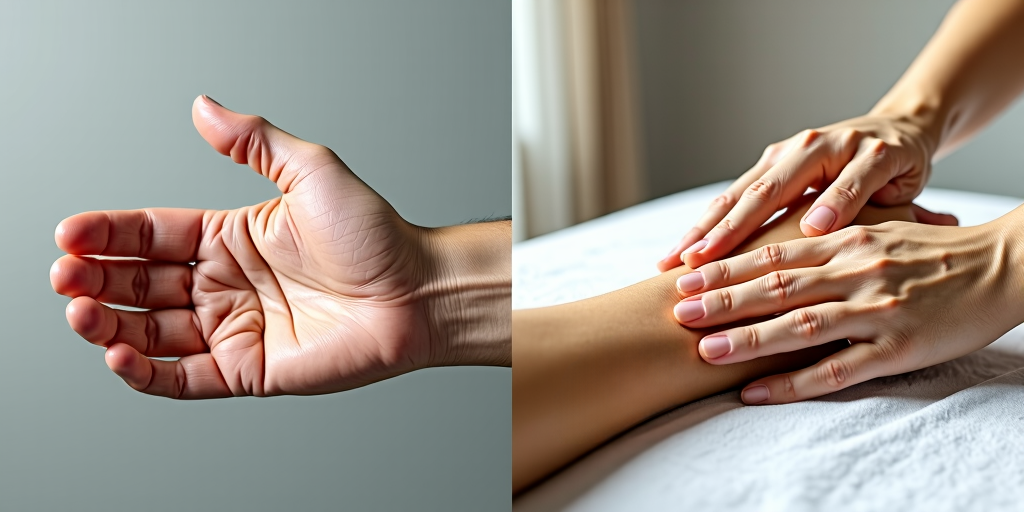When What Hurts, Might Not Hurt
Introduction
We often think of pain as something immediate—a stubbed toe, a pulled muscle, or an aching back. But what about the pain that sneaks up on us? The discomfort that doesn't hurt in the moment but slowly builds over time? Repetitive strain injuries (RSIs) from smartphone use, e-readers, and prolonged static postures are prime examples. If your thumbs ache, your elbows feel sore, or you experience an unexplained stiffness in your hands or arms, the culprit might be your daily tech habits. The good news? Massage therapy can help break these patterns before they become chronic, painful conditions.
The Hidden Impact of Repetitive Strain Injuries (RSIs)

RSIs develop gradually as repeated motions strain muscles, tendons, and joints. Unlike sudden injuries, RSIs result from microtraumas that accumulate over time, making them harder to pinpoint.
-
Smartphone Thumb (Texting Thumb): Overuse of the thumb for texting or scrolling leads to inflammation in the tendons.
-
E-Reader Elbow (Tablet Elbow): Holding an e-reader or phone for long periods can stress the elbow and forearm muscles.
-
Tech Neck & Shoulder Tension: Looking down at screens strains the neck and shoulders, leading to stiffness and headaches.
Why Tech-Related Pain is Hard to Notice
One of the biggest challenges with RSIs is their slow progression. Unlike an acute injury, there's no single moment of trauma—just small, repetitive movements that add up.
-
Delayed Pain: The discomfort doesn't appear immediately but builds over weeks or months.
-
No Clear Injury Event: It's difficult to associate the pain with a specific activity.
-
Compensatory Movements: Your body adjusts to discomfort, which can lead to secondary pain in other areas.
-
Intermittent Symptoms: Symptoms may come and go, making them easy to dismiss.
How Massage Therapy Helps Break the Cycle
Massage therapy is one of the most effective ways to counteract RSIs. It addresses muscle tension, improves circulation, and restores mobility to overworked joints and tendons.
-
Deep Tissue Massage: Targets deep muscle layers to release chronic tension and adhesions.
-
Myofascial Release: Helps stretch and loosen tight connective tissues that contribute to pain.
-
Trigger Point Therapy: Focuses on specific knots and tight spots caused by repetitive movements.
-
Stretching and Joint Mobilization: Increases flexibility and prevents stiffness.
Preventing RSIs with Better Habits
While massage therapy helps heal and prevent RSIs, making small changes to your daily habits can provide long-term relief.
-
Take Breaks: Avoid holding your phone or e-reader in the same position for extended periods.
-
Use Ergonomic Supports: A pop socket or phone stand can reduce thumb strain, and an armrest can ease elbow tension.
-
Stretch Regularly: Simple hand, wrist, and forearm stretches can improve flexibility.
-
Strengthen Key Muscles: Gentle strengthening exercises for the hands, wrists, and shoulders can help prevent fatigue.
-
Schedule Regular Massages: Consistent bodywork can catch tension before it turns into chronic pain.
Conclusion
Just because it doesn't hurt now doesn't mean it won't later. Repetitive strain injuries creep in over time, but that doesn't mean we have to live with them. Through mindful habits and regular massage therapy, we can address these subtle pains before they turn into major issues. If you've been experiencing unexplained discomfort in your hands, thumbs, elbows, or shoulders, consider integrating massage into your routine. It's a simple, effective way to break the cycle of RSI and keep your body feeling its best.
Wishing you happiness and health – Cristy
